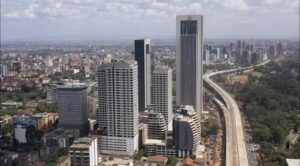A recent incident at Detroit Metropolitan Airport, involving five Spirit Airlines jets submerged in corrosive firefighting foam following a lightning strike, underscores the often-overlooked vulnerabilities within even the most robust aviation infrastructure. While Spirit Airlines is known for its budget-friendly fares, the incident raises questions about the broader implications for all airlines, especially those focusing on premium and luxury travel, concerning hangar safety and the potential disruption to high-value aircraft. Reports indicate that the hangar’s flooding resulted from a malfunctioning sprinkler system activated by the lightning strike, a scenario that could have far more significant consequences for airlines operating high-value aircraft, including those in the private and business aviation sectors.
According to reports, the extent of the damage to the Spirit Airlines aircraft is substantial, requiring extensive cleaning and potential repairs. The corrosive nature of the foam used in firefighting, while essential for safety, presents unique challenges when dealing with sophisticated aircraft materials and finishes. This incident highlights the need for enhanced safety protocols and infrastructure investments across the board, including hangar design and maintenance strategies for all levels of air travel. For private aviation clients accustomed to impeccably maintained aircraft and seamless travel experiences, such an incident points to potential logistical nightmares and unforeseen delays that could disrupt highly valued itineraries and travel plans. Experts in aviation risk management, according to aviation safety publications, will likely conduct thorough investigations into the incident to identify preventative measures and industry-wide best practices.
While the immediate impact is felt by Spirit Airlines, the broader concern extends to the potential financial and reputational risks for all airlines. The downtime associated with repairs and the potential for further unforeseen damages add up to considerable costs. For premium and luxury airlines, the focus extends beyond the financial implications. The disruption caused by this incident, even if contained to a budget airline, raises concerns about the reliability and robustness of airport infrastructure, impacting the experience of high-net-worth individuals expecting flawless, luxurious air travel. A delayed or damaged aircraft can significantly impact the meticulously planned itineraries of high-value clients who demand absolute reliability and punctuality from their preferred private aviation services. “The extent of the damage is still being assessed,” reported [Biztoc.com], emphasizing the uncertainty surrounding the long-term consequences for all airlines.
The incident also indirectly points to the ongoing conversation about sustainable practices within the aviation industry. The use of aqueous film-forming foam (AFFF), known for its effectiveness but also its environmental impact due to the presence of PFAS, highlights the complexities of balancing safety and ecological responsibility. The cleanup and disposal of the significant amounts of foam used in this incident will likely be a protracted and costly undertaking, raising questions about the long-term environmental consequences and the need for innovative, eco-friendly alternatives. This is particularly relevant for luxury and private aviation segments increasingly concerned with their environmental footprint and committed to implementing sustainable practices. The incident underscores that a comprehensive approach to aviation safety necessitates not only operational efficiency but also environmental stewardship.
Looking ahead, this incident serves as a critical reminder of the vulnerabilities within airport infrastructure and the need for continuous improvement in safety protocols and maintenance. The impact ripples beyond the affected airline and underscores the importance of robust risk management strategies, especially for premium and luxury providers operating high-value aircraft. Industry analysts, according to several leading aviation publications, will closely scrutinize the investigation’s findings to identify best practices and inform future preventative measures. The focus, therefore, must shift towards proactive measures to prevent similar incidents, ensuring the seamless and luxurious travel experiences valued by high-net-worth individuals and corporations remain reliably unaffected by such unforeseen events. The aviation industry, at all levels, must prioritize resilience and proactive risk management to maintain its reputation for delivering safe and efficient air travel, even amidst unforeseen circumstances.
This article was created with assistance from AI technology and has been reviewed by our editorial team to ensure accuracy and compliance with our content standards.











